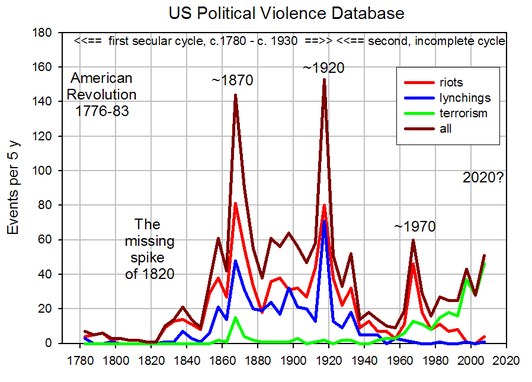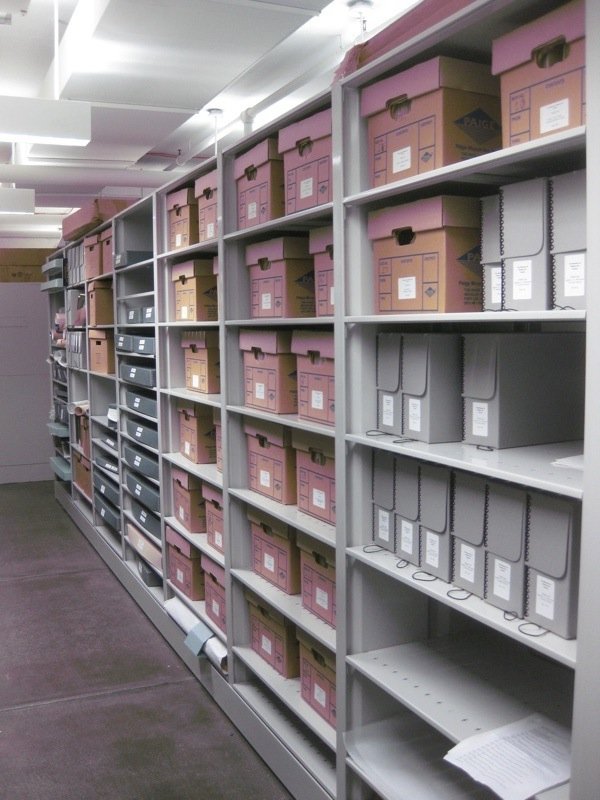Mathematicians Can Predict The Future By Looking At The Past
Aadhya Khatri - Jul 26, 2019

Predicting the future might sound like the stuff of science fiction but Peter Turchin, a professor at the University of Connecticut, thinks otherwise
- A Math Formula Tells Us How Long Everything Will Live
- Shakuntala Devi Awarded Guinness World Records’ Fastest Human Computation Certificate After 40 Years
- This Magical Number Will Help You Find A Parking Space, The Perfect Apartment, And Even A Suitable Spouse
Predicting the future might sound like the stuff of science fiction, but Peter Turchin, a professor at the University of Connecticut, and his "cliodynamics" are proving that it is not necessarily the case.
Cliodynamics describes a process in which mathematicians and scientists team up to analyze the past in the hope of making out a pattern that can help to predict the future. The research was named after Clio, the muse of history in Greek mythology.
The ultimate goal of Turchin and other experts that practice"cliodynamics" is the same as that of historians, but they follow a different path of leveraging math rather than languages.

This effort is just part of a larger scheme to gain more knowledge of our world by analyzing the vast amount of digital data on the Internet.
Turchin is in no way a historian, but when he realized that all of the most exciting matters in ecosystem dynamics have already been solved, he decided to apply mathematics to other fields. Economics, anthropology, and sociology have been benefited from the advancement of math, but somehow, history stayed out of the trend. Turchin’s movement was founded in the late 90s, and many more have joined ever since.
The idea is nothing new, many thinkers have thought about this possibility before, like Oswald Spengler, Leo Tolstoy, and Georg Wilhelm Friedrich Hegel, but Turchin has something his predecessors did not.
The difference here is not mathematics though. What he needs is just common statistical techniques, and the data set he has is not large enough to be considered ‘big data.’ However, what fuels the movement is the availability of newly digitalized historical records and newspaper. What Turchin and his associates do is to build a mathematical model based on only one data set and then test it using other data. This method allows them to see if the model is accurate.
Waves Of Violence
Turchin and other experts have found something they call a pattern of social instability. They came up with "Secular Cycle,” which suggests that there is a cycle of 50 years of political violence. However, that theory does not apply to all nations. For example, China does not experience any of these upheavals, but it is right in the US.

There is also the 100-year Secular Cycles, which are fueled by demographic trends, like when the population of a nation outgrows its own capacity, resulting in a reduction in wages and other consequences. However, that is not the worst. According to Turchin, elite overproduction is far more dangerous. This is when too many elites compete for a smaller number of leading positions, like political spots, which can weaken the stability of a nation.
These issues can still be found in industrial countries. The growth of the population cannot lead to mass starvation anymore, but it can inevitably cause unemployment.
Another trend is 50-year cycles of violence, which is the accumulation of conflict, which leads to the release of all the pressure. In each cycle, when social inequality builds up to a breaking point, reform takes place, but over time, everything will happen again. This graph showed the spikes when these conflict broke out into violence. One exception is the early 19th century, which might be because of the prosperity of the time.

The spikes come with various degree of severity, depending on how the government deals with the issue. Turchin said that in the 1910s, one of these conflicts would happen in the US if it was not for the effect of the progressive era. What the elite class did at that time has helped to cushion the impact of the accumulated inequality. However, not all of the cycles have that kind of result. The most common solution to end a conflict is through violence.
Turchin said that what really fueled these cycles are feedback loops:
However, some theories go against that of Turchin. Many researchers who practice econophysics at the New England Complex Systems Institute come up with their own model for political violence. They argue that food prices are the critical variable if we want to predict instability. These researchers said that while other variables may appear when violence happens, the trigger is always the price of food.
Into the Dark Archives
To deal with the massive amount of data on the Internet, machine learning has come into play. But according to Turchin, we can have lots of valuable data by crunching the dark archives, the amount of information that has not been digitalized. Samuel Arbesman, a quantitative biologist, has another name for it, long data, and he suggested that we should all pay more attention to these dark archives.

As Arbesman said, lots of historians have embraced Turchin’s approach and opened up to a collaboration with economists and mathematicians. However, businesses can benefit from long data as much as academics.
Many companies have been around for a very long time, like Nintendo, which started as a firm selling play cards in 1889. IBM is another example. It was found in 1911 and used to sell tabulating machines. That is not all, Kongō Gumi, a Japanese construction company, has been 1,400 years old. Turchin said that the organizations that had a long history could look into their past to predict their own future.
Featured Stories

Features - Jul 01, 2025
What Are The Fastest Passenger Vehicles Ever Created?

Features - Jun 25, 2025
Japan Hydrogen Breakthrough: Scientists Crack the Clean Energy Code with...

ICT News - Jun 25, 2025
AI Intimidation Tactics: CEOs Turn Flawed Technology Into Employee Fear Machine

Review - Jun 25, 2025
Windows 11 Problems: Is Microsoft's "Best" OS Actually Getting Worse?

Features - Jun 22, 2025
Telegram Founder Pavel Durov Plans to Split $14 Billion Fortune Among 106 Children

ICT News - Jun 22, 2025
Neuralink Telepathy Chip Enables Quadriplegic Rob Greiner to Control Games with...

Features - Jun 21, 2025
This Over $100 Bottle Has Nothing But Fresh Air Inside

Features - Jun 18, 2025
Best Mobile VPN Apps for Gaming 2025: Complete Guide

Features - Jun 18, 2025
A Math Formula Tells Us How Long Everything Will Live

Features - Jun 16, 2025

Comments
Sort by Newest | Popular